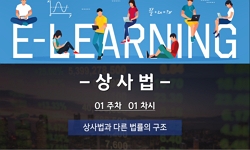This thesis is focused on two aspects of acting, the representational and the simulative. Since tragedy is defined as ``imitation of an action`` by Aristotle, acting has been regarded as a sort of mimetic technique. As a matter of fact, we can easily ...
http://chineseinput.net/에서 pinyin(병음)방식으로 중국어를 변환할 수 있습니다.
변환된 중국어를 복사하여 사용하시면 됩니다.
- 中文 을 입력하시려면 zhongwen을 입력하시고 space를누르시면됩니다.
- 北京 을 입력하시려면 beijing을 입력하시고 space를 누르시면 됩니다.
부가정보
다국어 초록 (Multilingual Abstract)
This thesis is focused on two aspects of acting, the representational and the simulative. Since tragedy is defined as ``imitation of an action`` by Aristotle, acting has been regarded as a sort of mimetic technique. As a matter of fact, we can easily find such a mentions in the acting history and some actor`s biographies. Therefore it is naturally accepted that many theories on acting are on the basis of this aesthetics of mimesis or representation in art. But some questions on the acting are nowadays raised. That is the utility of this mimetic theory. The forms and contents of acting have been constantly changed in the history. therefore, we can easily assume that our contemporary theatre and theories of acting have to be changed according to changes. But we can`t find such a changes in the fields of theatre practices and theories in korean theatre. Especially, in the education and training for actor. It is still observed the strong influence from the realistic style of acting or “Stanislavsky System”. In the mimetic acting (representational acting) is it very accented ``emotion`` and ``emotional interaction`` between actors and spectators to feel ‘true’. What the most important thing in this style is how truly it resembles the object of the imitation on the stage. That means logically there are some ‘good’ or ‘bad’ acting and ‘true’ acting or ‘false’. It is questionable whether it still valid for our contemporary theatre. the main reason why the ‘simulative acting’ instead of ‘mimetic acting’ is proposed in this thesis is related with changes in our contemporary theatre, for example, such a theatres ‘postdrama’ and ‘energy theatre’ etc. In the simulative acting is it not important how truly actors imitate the figures in texts because they are some kinds of fictional beings. On the other hand, what the important thing in ‘simulative acting’ is not the degree of imitation but the differentiation of resemblance. It can be caused many revolutionary changes in the fields of education for acting and on the stages. The purpose and goal in acting can be moved from the figures in texts from actors themselves. And it can make the actor concentrate on himself and be more vital on the stage.
1 최민식, "휴먼 선집" 눈빛, 2013
2 김태훈, "현장에서 통일되어야 하는 스따니슬랍스키의 연기학 전문 용어" 예니, 2013
3 Lehmann, Hans-Thies, "포스트드라마 연극" 현대미학사, 2013
4 Schechner, Richard, "퍼포먼스 이론 I" 현대미학사, 2001
5 김방옥, "탈근대 희곡에 나타난 인간/동물의 탈경계성 연구 -‘타자성’, ‘-되기(devenir)’, ‘생태적 공존’을 중심으로-" 한국연극학 1 (48) : 5 ~ 50, 2012
6 Worringer, Wilhelm, "추상과 감정이입" 계명대학교 출판부, 1982
7 김대현, "장면 연출과 행위 현장 -장면 연출의 추상성과 시뮬라시옹을 중심으로-" 연극교육연구 22 (22) : 5 ~ 39, 2013
8 아타루, 사사키, "잘라라, 기도하는 그 손을" 자음과 모음, 2012
9 Mitchell, Katie, "연출가의 기술" 태학사, 2012
10 Carlson, Marvin, "연극의 이론" 한국문화사, 2004
1 최민식, "휴먼 선집" 눈빛, 2013
2 김태훈, "현장에서 통일되어야 하는 스따니슬랍스키의 연기학 전문 용어" 예니, 2013
3 Lehmann, Hans-Thies, "포스트드라마 연극" 현대미학사, 2013
4 Schechner, Richard, "퍼포먼스 이론 I" 현대미학사, 2001
5 김방옥, "탈근대 희곡에 나타난 인간/동물의 탈경계성 연구 -‘타자성’, ‘-되기(devenir)’, ‘생태적 공존’을 중심으로-" 한국연극학 1 (48) : 5 ~ 50, 2012
6 Worringer, Wilhelm, "추상과 감정이입" 계명대학교 출판부, 1982
7 김대현, "장면 연출과 행위 현장 -장면 연출의 추상성과 시뮬라시옹을 중심으로-" 연극교육연구 22 (22) : 5 ~ 39, 2013
8 아타루, 사사키, "잘라라, 기도하는 그 손을" 자음과 모음, 2012
9 Mitchell, Katie, "연출가의 기술" 태학사, 2012
10 Carlson, Marvin, "연극의 이론" 한국문화사, 2004
11 Pruner, Michel, "연극 텍스트의 분석" 동문선, 2001
12 우상전, "아! 스타니슬라브스키여" 오늘의 서울연극 36, 2013
13 오순한, "시학 & 배우에 관한 역설" 유아트 도서출판, 2013
14 Baudrillard, Jean, "시뮬라시옹" 민음사, 2001
15 김대현, "스타니슬랍스키와 ‘시스템’ -시스템 형성의 과정과 그 특성을 중심으로-" 연극교육연구 21 (21) : 5 ~ 46, 2012
16 김대현, "스타니슬랍스키 연구사 -국내 스타니슬랍스키 수용․번역․연구의 제 문제를 중심으로-" 한국연극학 (40) : 345 ~ 400, 2010
17 황희연, "순결한 열대는 슬픈 열대를 미처 예감하지 못했네" 하나은행 109 (봄), 2013
18 Stanislavski, C. S., "배우훈련" 소명, 2001
19 Donnellan, Declan, "배우와 목표점" 연극과 인간, 2012
20 Stanislavski, C. S., "배우수업" 성문각, 1979
21 Hegel, Georg W. F, "미학 강의" 지식을만드는지식, 2012
22 박정자, "마이클 잭슨에서 데리다까지-일상의 미학, 미학의 일상" 기파랑, 2009
23 박정자, "마그리트와 시뮬라크르" 기파랑, 2011
24 Nobus, Dani, "라캉 정신분석의 핵심 개념들" 문학과지성사, 2013
25 김효, "들뢰즈/가타리의 ‘되기’ 이론으로 살펴 본 장 쥬네의 <하녀들 >" 한국연극학 (36) : 227 ~ 262, 2008
26 박동수, "다른 무엇보다 이 세상이 아름답다는 찬사" 하나은행 (봄), 2013
27 "http://www.ttis.kr/2013/10/%ec%95%84-%ec%8a%a4%ed%83%80%eb%8b%88%ec%8a%ac%eb%9d%bc%eb%b8%8c%ec%8a%a4%ed%82%a4%ec%97%ac-%ec %9a%b0%ec%83%81%ec%a0%84/"
28 "http://www.ohmynews.com/NWS_Web/View/at_pg.aspx?CNTN_CD=A0001879482&PAGE_CD=N0001&CMPT_CD=M0018"
29 Stanislawski, K. S., "Die Arbeit des Schauspielers an sich selbst" Henschel, 1993
30 Stanislavski, C. S., "An actor prepares" Routledge, 1989
31 김미혜, "20세기 전반기 유럽의 연출가들" 연극과 인간, 2001
32 김대현, "'-되기'의 배역창조와 '행위 현장'의 생성성" 연극교육연구 16 : 5 ~ 30, 2010
동일학술지(권/호) 다른 논문
-
- 한국연극교육학회
- 임유영 ( You Young Lim )
- 2014
- KCI등재
-
Perspectives on Epistemology in Beckett`s ?Film?
- 한국연극교육학회
- 양기찬 ( Gi Chan Yang )
- 2014
- KCI등재
-
배우의 진실된 소리에 관한 수사학적 고찰-고대 수사학의 연기술(actio)을 중심으로-
- 한국연극교육학회
- 김석 ( Seok Kim )
- 2014
- KCI등재
-
- 한국연극교육학회
- 장혜숙 ( Hye Sook Chang )
- 2014
- KCI등재






 KISS
KISS






